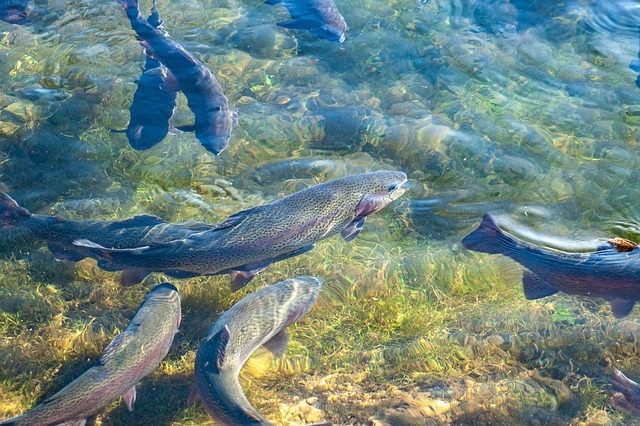


Photo: Pixabay
Published on 04/08/2024
By Roseli Andrion | Agência FAPESP – In a search for ways to reduce fish farming losses and guarantee biosafety, researchers at Sanipeixe, a startup based in Pirassununga, São Paulo state (Brazil), have developed a disease prevention solution using environmental monitoring. The water from fish tanks is filtered and subjected to real-time PCR analysis (in which many copies of a specific DNA region can be made) with the aim of detecting pathogens in the water.
The idea arose from the experience of Tiago Milanin, coordinator of project development at Sanipeixe and a researcher in the area for some 14 years. “During my postdoctoral research in the United States, I learned a technique for filtering river water. I brought it to Brazil, and we founded Sanipeixe. From there, we created the monitoring protocol for tilapia farming,” he said.
The technique was developed with the support of FAPESP’s Innovative Research in Small Business Program (PIPE). Although it was developed for tilapia, it can be used to monitor farms that breed other fish species. “Pathogenic microorganisms don’t attack only tilapia. They may be present in several other fish species sold in Brazil and elsewhere,” Milanin said.
The production chain analysis conducted as part of this environmental monitoring system assures good health from the embryo and fry stages to the retailing of adult fish. Quality assurance throughout the breeding process ensures that healthy fish are supplied to consumers. “Poor sanitation and health is one of the main challenges in this industry, potentially causing the loss of 20% of a farm’s fish stock,” he said. Losses on this scale could amount to BRL 1.6 billion per year in terms of the impact on Brazilian production.
Control of pathogens
Early detection of disease is a complex task in fish farming. “Farmers can see when cattle, pigs and poultry are sick, but this isn’t the case with fish. Once they start displaying clinical symptoms of bacterial or viral infection, it’s too late, as a large proportion of the stock will already have been compromised,” Milanin said.
The system developed by Sanipeixe solves this problem by enabling farmers to detect pathogens in the water where they are raising the fish so that they can take preventive measures. This is the first solution of the kind in Brazil, according to Milanin. The startup plans to extend its applicability. “We are thinking of studying diseases in shrimp and other aquatic animals in future,” he said.
For Mirele Poleti, a biomedical specialist and associate researcher at Sanipeixe, the same concept is valid for ornamental fish, which often turn out to have died in the aquarium for no apparent reason accessible to the owner. “Monthly monitoring would permit early identification of any pathogens present in the water before they harm the fish,” she said.
Animal wellbeing
Another important aspect is animal wellbeing, part of which consists of clean tanks, good water quality, and the right density of fish in accordance with the species, Milanin explained. “When the water is healthy, pathogenic bacteria are either absent or at acceptable levels. If so, provided the farmer adopts practices that foster animal wellbeing, the ecosystem will be suitable for healthy breeding,” he said.
Preventive use of medication is common in the industry, often involving wide-spectrum drugs, whose unnecessary or improper use can be avoided if the pathogens are identified early enough. “Does this product need to be used? Are bacteria present? If so, is the product the right antibiotic?” Milanin asked.
The concern is legitimate, since these drugs may not be effective against all pathogens. “Some bacteria die when an antibiotic is used, while others don’t,” he noted.
Indiscriminate use of antibiotics has a direct impact on public health. “Drug resistance may make it harder to combat bacterial diseases in future. Their release into the environment is also a major health hazard,” Poleti said.
Professionalization of fish farming
According to the researchers, professionalization of fish farming in Brazil is recent, but farmers are increasingly paying attention to animal health. “Making sure the fish are healthy is particularly important to winning a major share of the global market,” Milanin said.
On fish farms, disease is often diagnosed visually by identifying clinical signs if and when they are visible. Fish that do manifest signs of disease are not usually sent to a laboratory for analysis, but when they are, it may be some time until the result is delivered, as many labs have to culture bacteria for this purpose. Some are hard to grow and require a specific culture medium. Another difficulty is that each pathogen involves a separate analysis.
In light of all these issues, the researchers decided to develop a solution for preventive environmental monitoring to diagnose pathogens directly in the breeding tank water.
Image by Katharina N. from Pixabay
Source: https://agencia.fapesp.br/51317